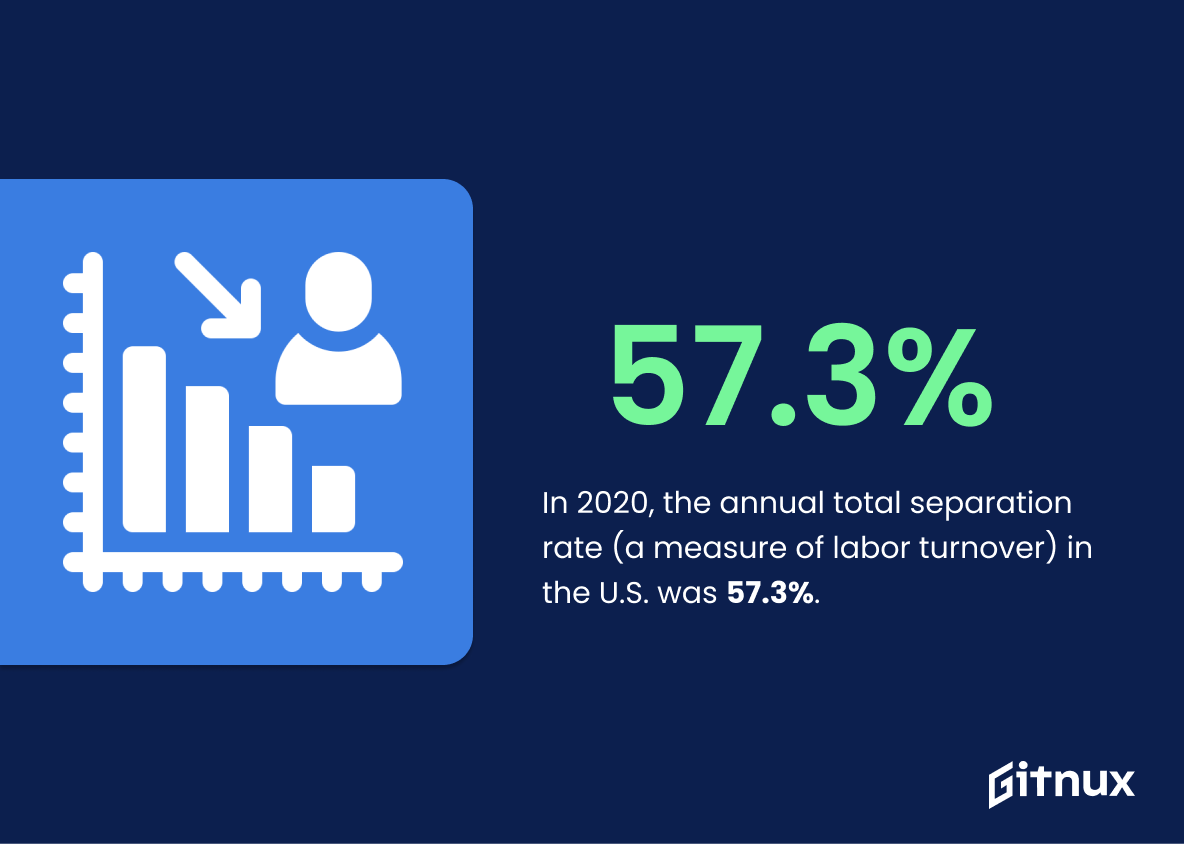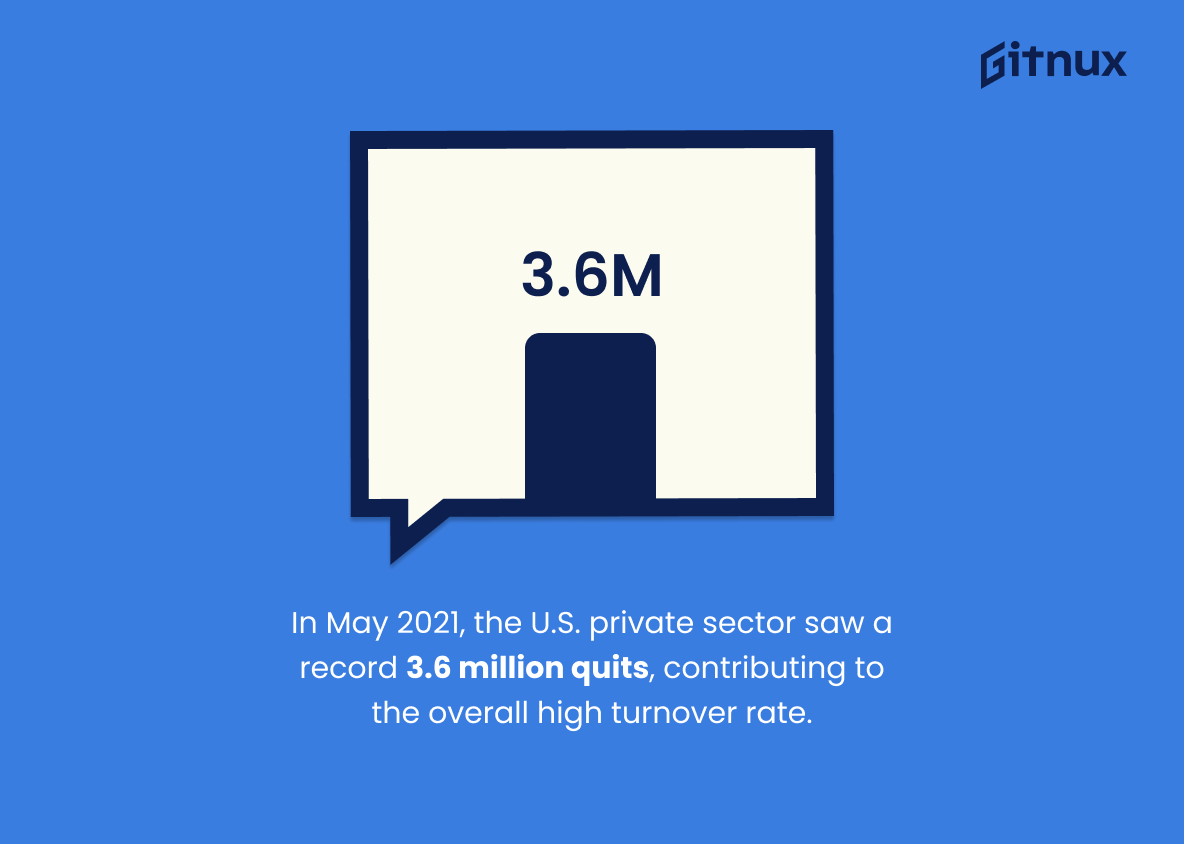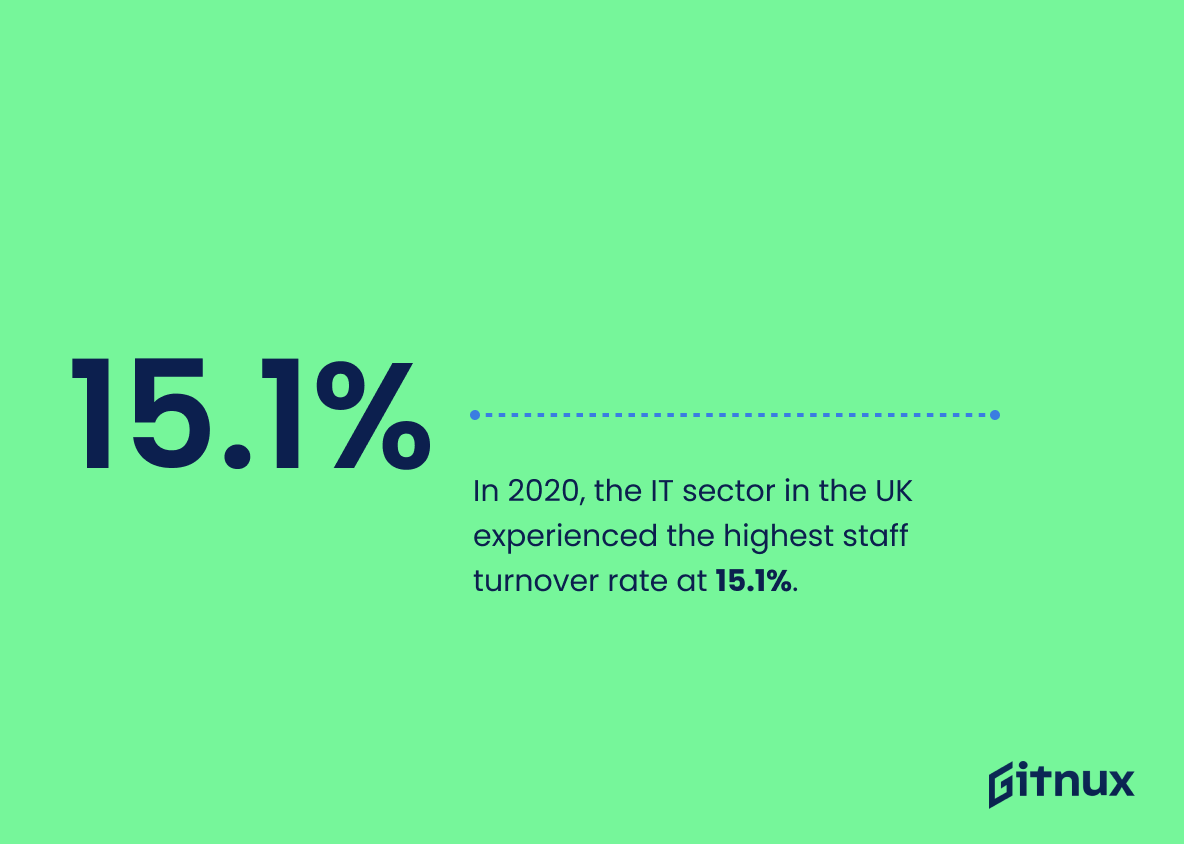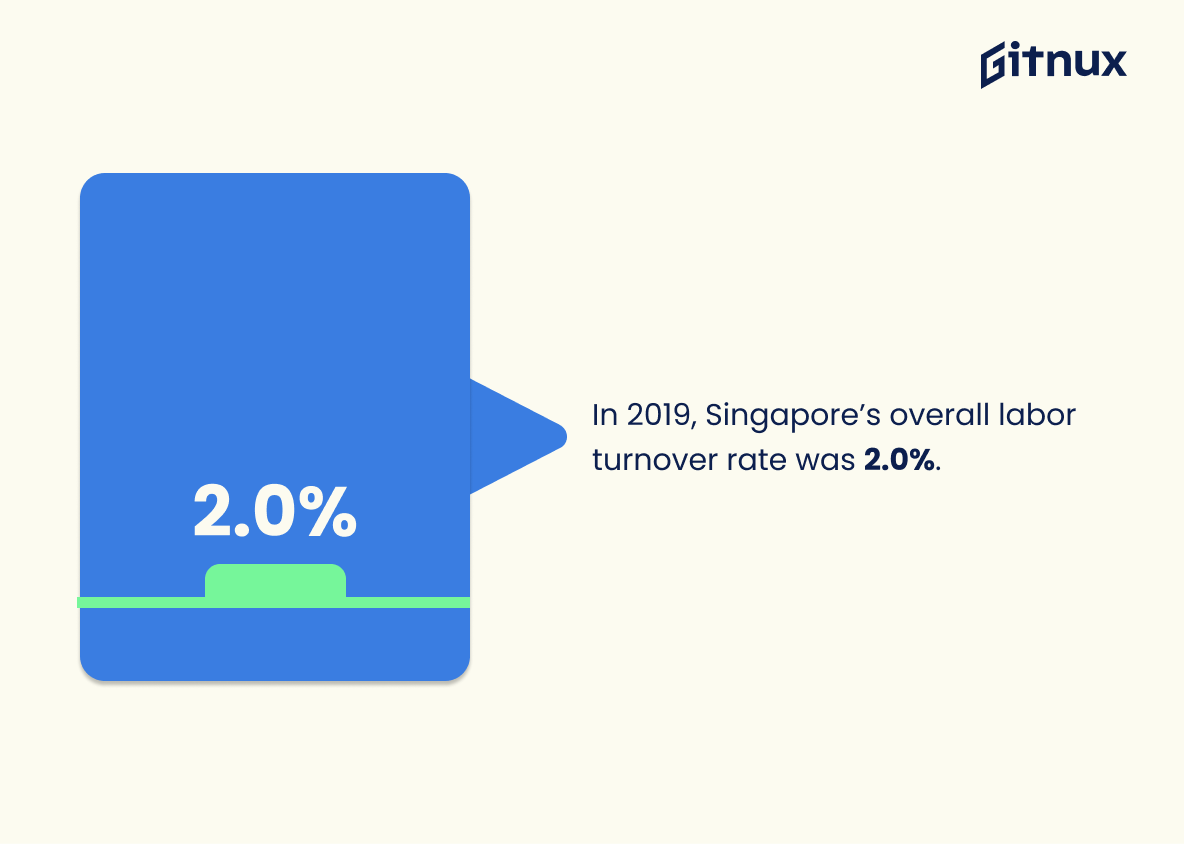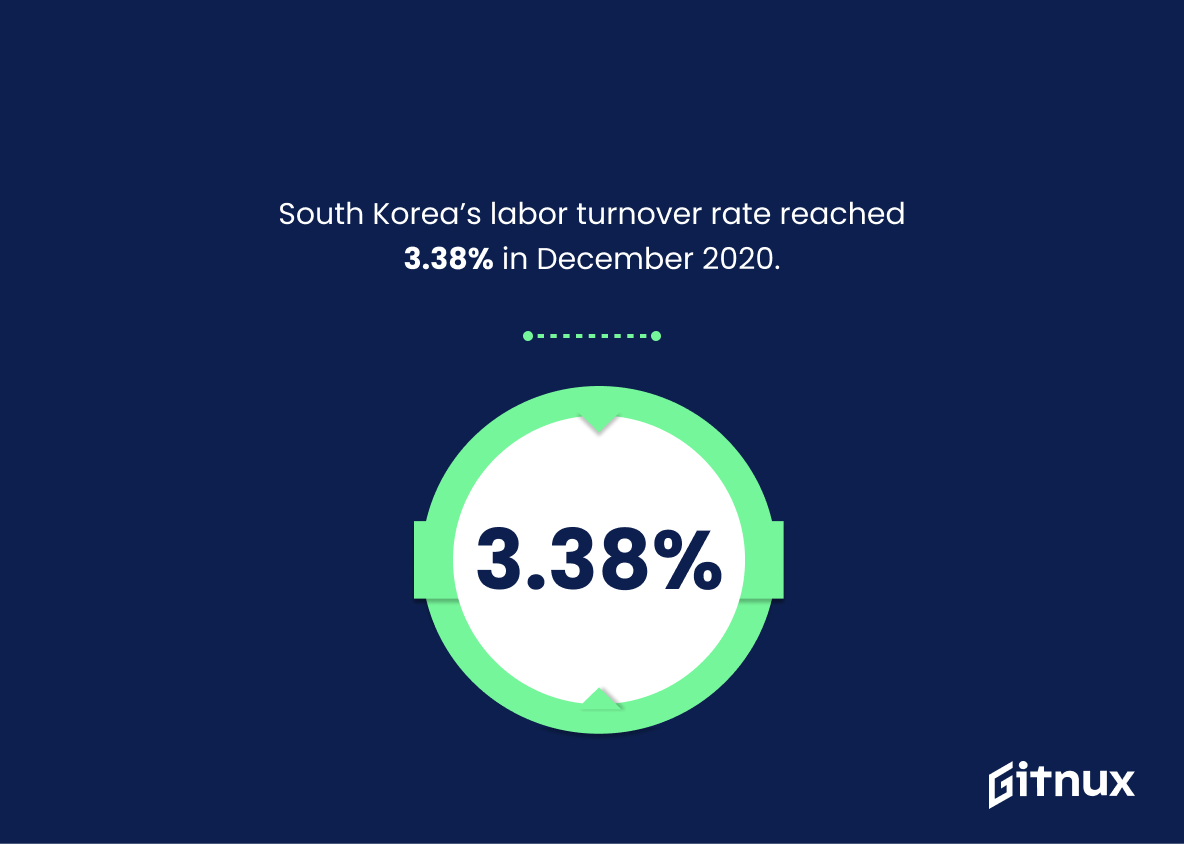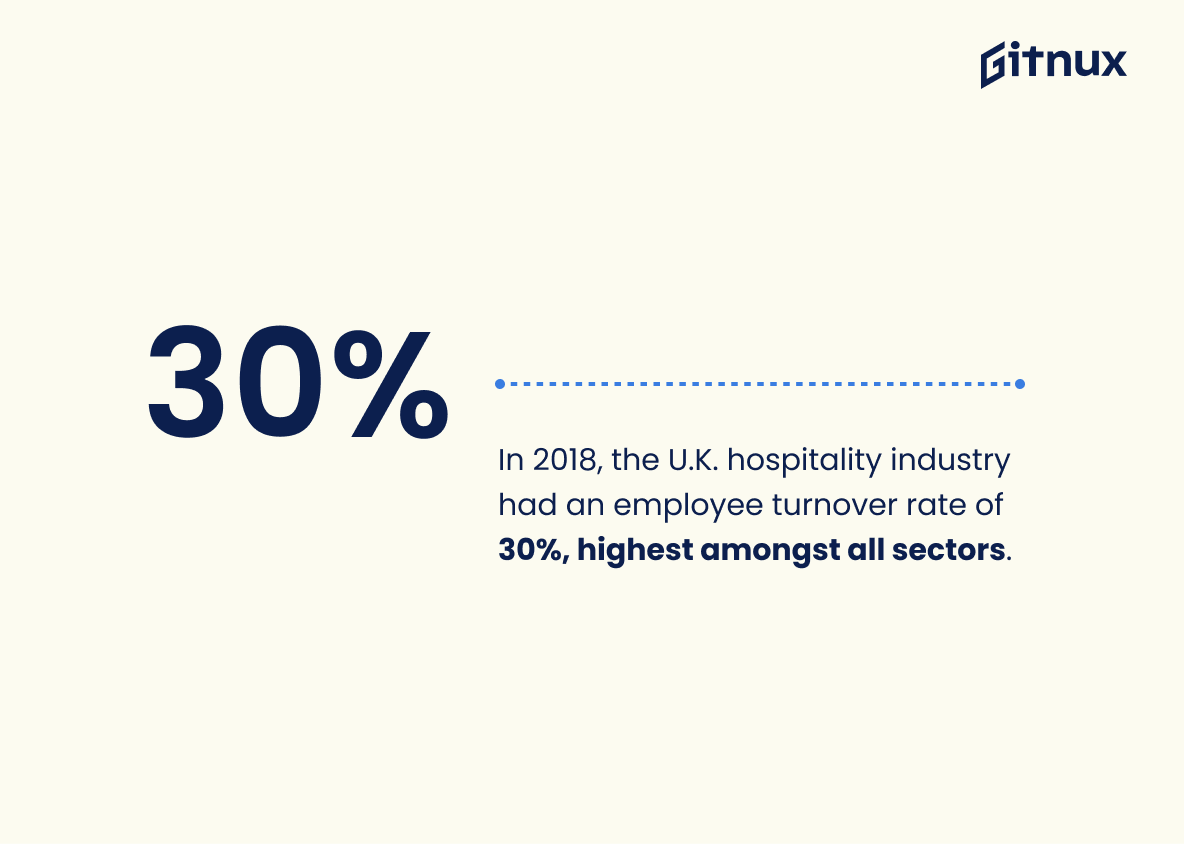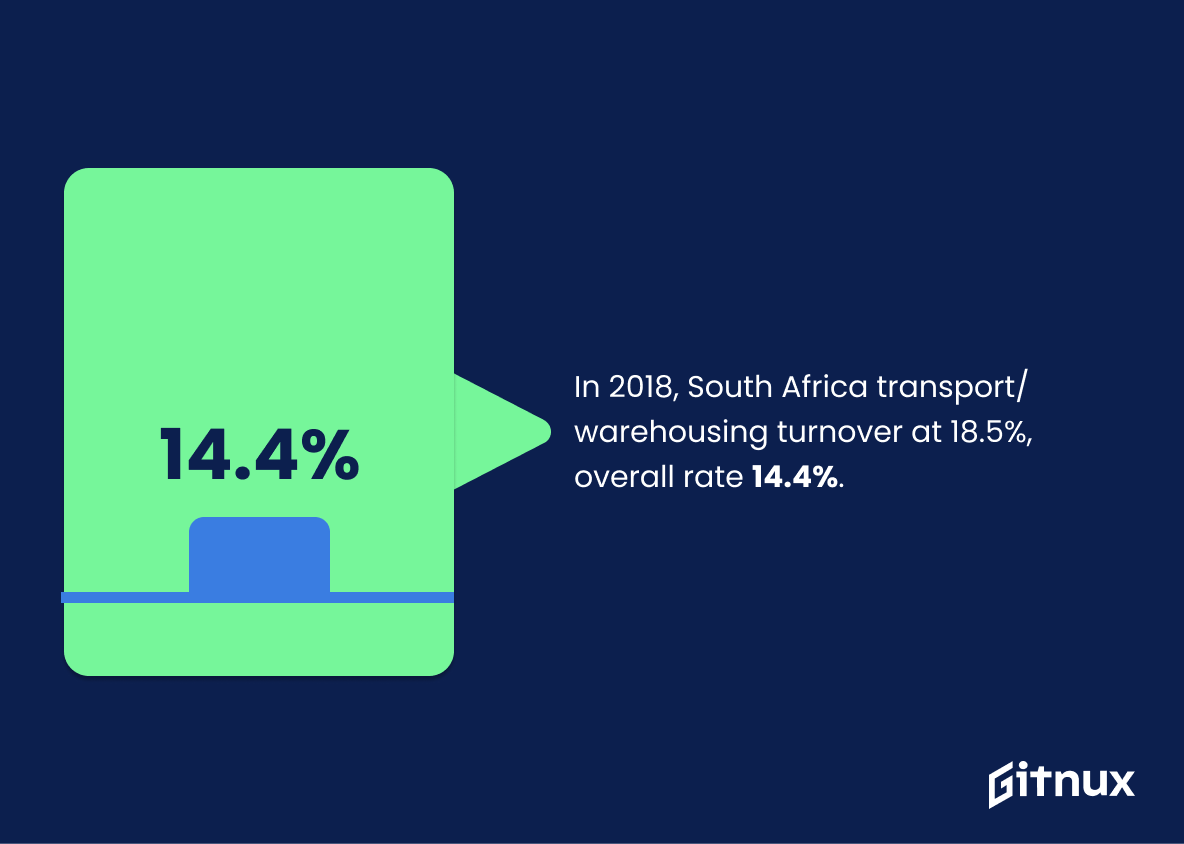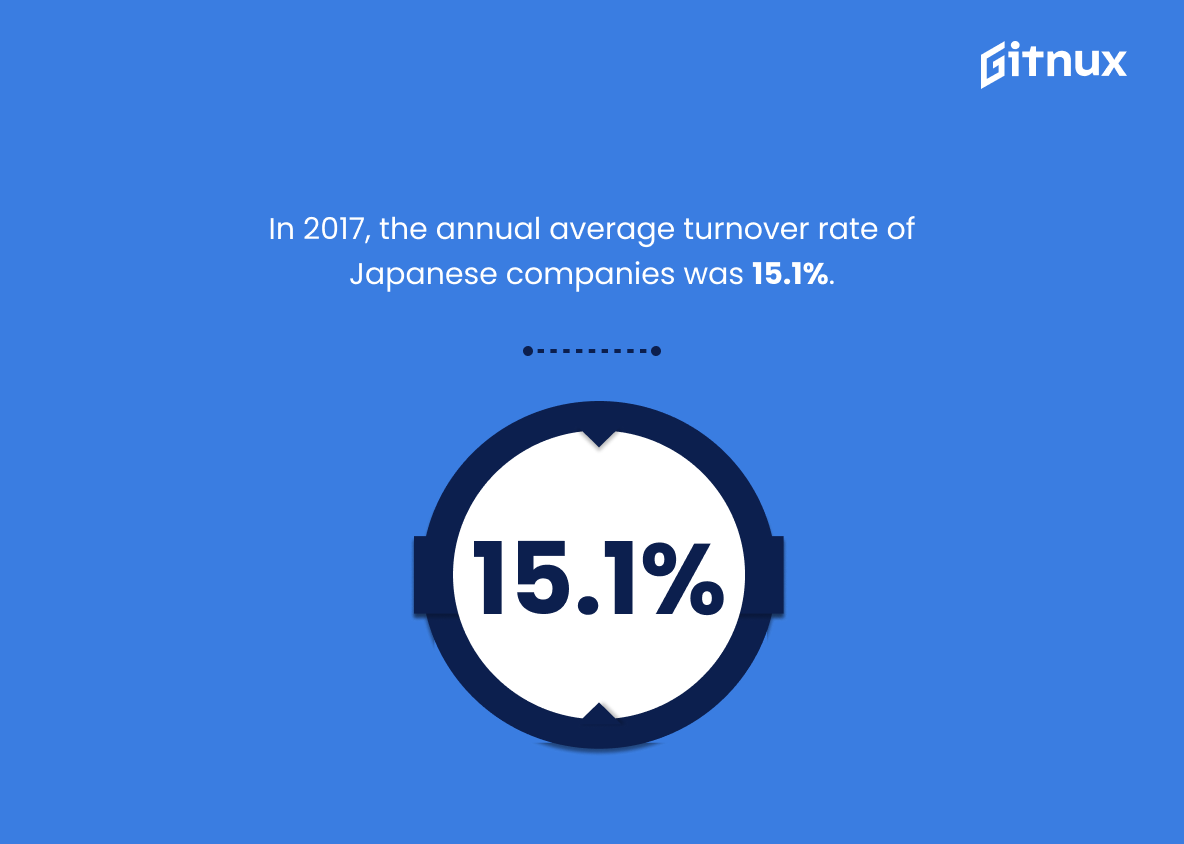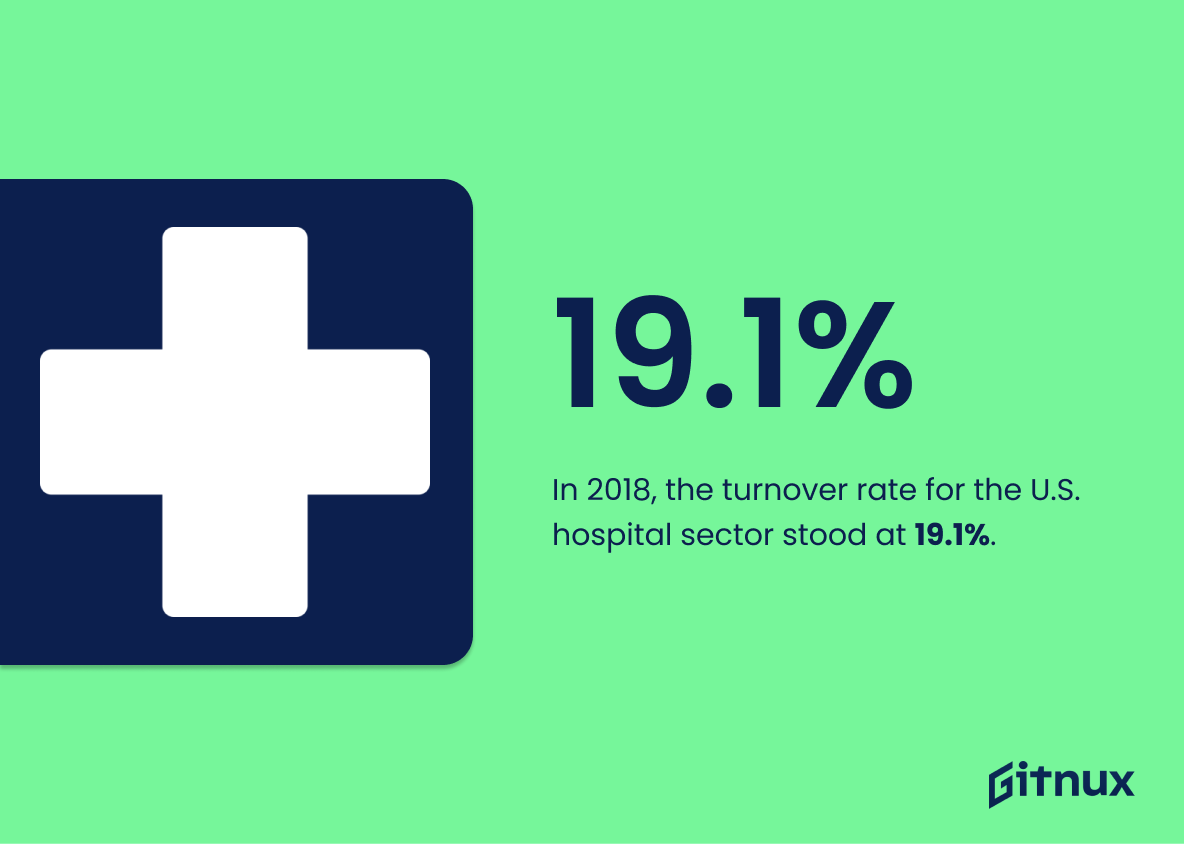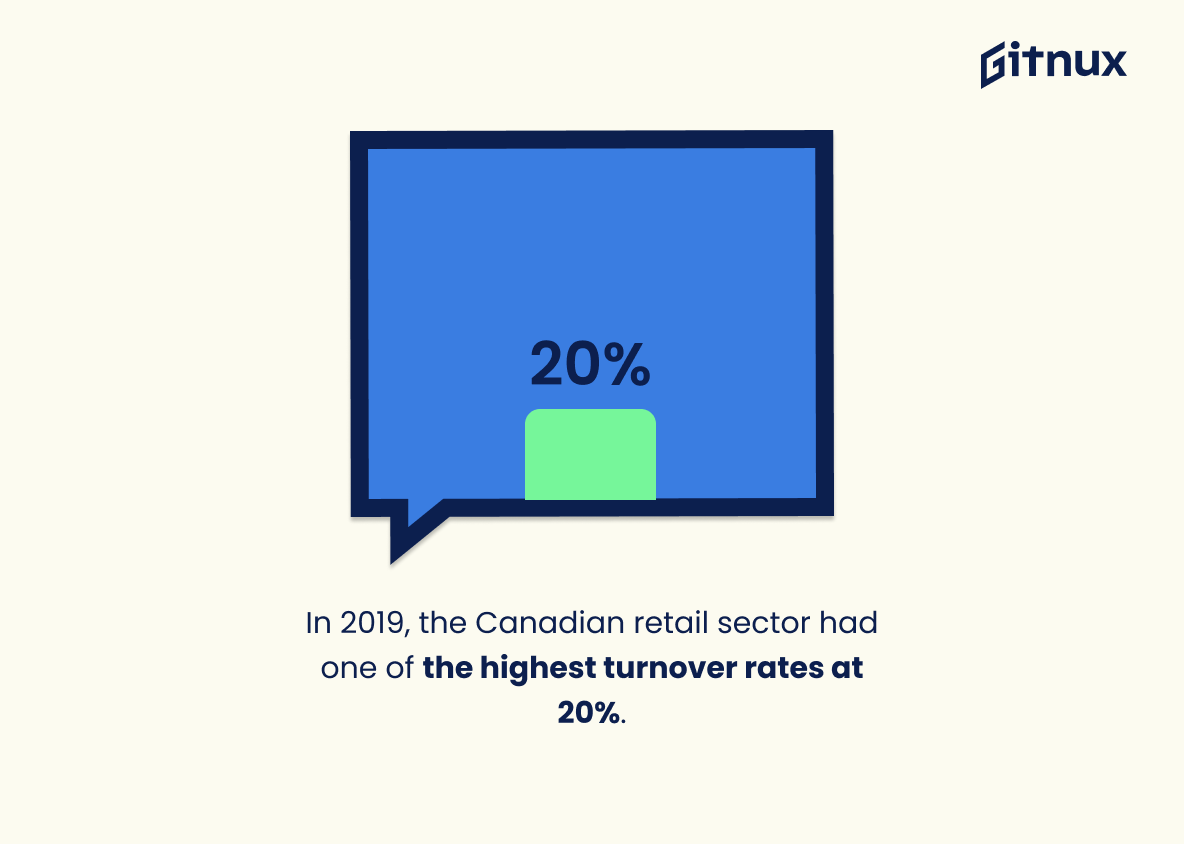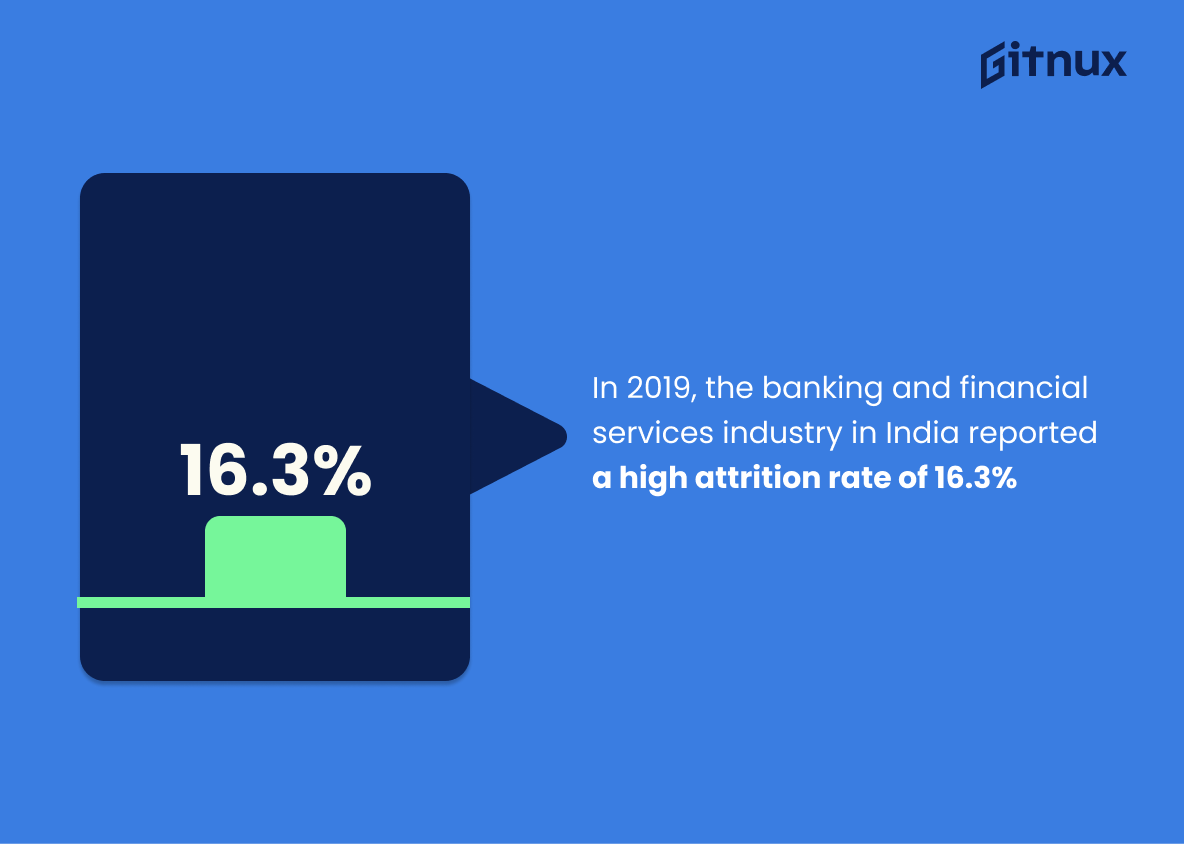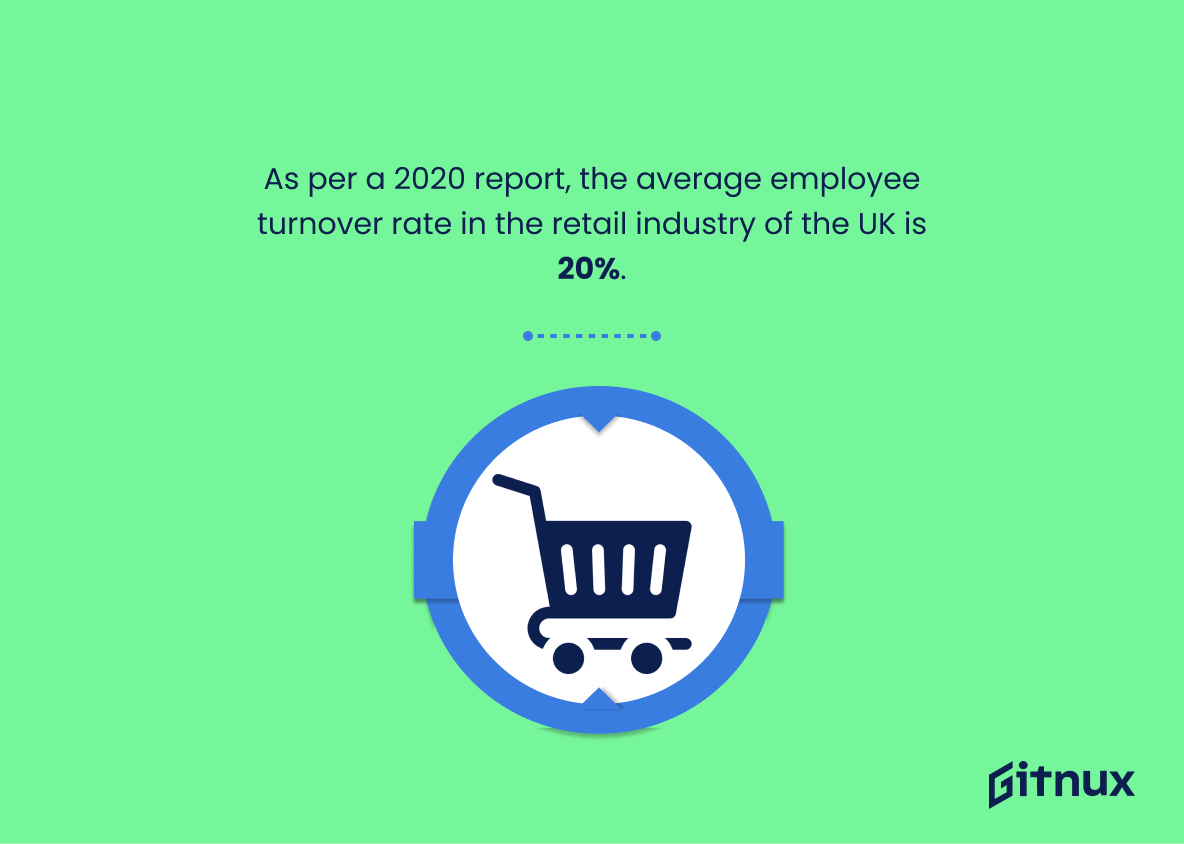Navigating through the labyrinth of professional landscapes, one often stumbles upon a rather impactful boulder – labor turnover. A critical issue with both subtle and explicit consequences, labor turnover can vibrate through the corridors of an establishment, affecting its dynamics drastically. This blog post endeavors to delve into the heart of labor turnover, exploring critical statistics from eye-opening studies and data.
By understanding these numbers, we aim to shed light on patterns, trends, and insights that can guide organizational strategies, fostering workplace environments that nurture employee satisfaction and reduce labor turnover rates. For recruiters, employers, or professionals eager to grasp the bigger picture of staff retention, this piece promises a comprehensive statistical overview of labor turnover. Let’s uncover what the numbers have to say.
The Latest Labor Turnover Statistics Unveiled
In 2020, the annual total separation rate (a measure of labor turnover) in the U.S. was 57.3%.
Unpacking the 57.3% annual total separation rate in the U.S. for the year 2020 offers a gold mine of insights for anyone analyzing labor turnover statistics. It’s like the heartbeat of the country’s employment landscape, fluctuating with the circumstances that swept the nation. This figure gives us a bird’s eye view of the employment churn, shedding light on the dynamics of workers leaving jobs – whether due to resignations, retirements, layoffs, or other factors.
This data is a vital tool in the toolkit of policymakers, human resources professionals, and economists, among others. With this, they can explore areas of instability in the labor market, pinpoint trends, or even shape proactive strategies to better control labor turnover in the future.
In May 2021, the U.S. private sector saw a record 3.6 million quits, contributing to the overall high turnover rate.
Highlighting the record 3.6 million private sector quits in May 2021 paints a vivid picture of the dynamic fluctuations found in labor turnover statistics. This figure not only anchors the magnitude of job shifts but also situates the narrative within a tangible setting. Amid an ongoing global crisis, such a grand exodus from the private sector catapults into sharper focus, underscoring potential stress points within the employment landscape that warrant deeper exploration.
This statistic, serves as a compelling springboard, catalyzing inquiries into potential causal factors and stimulating dialogues about its socio-economic implications – like wages, job satisfaction, and employee engagement – thereby enriching our understanding of labor turnover.
In 2020, the IT sector in the UK experienced the highest staff turnover rate at 15.1%.
Unraveling the nuances of the labor market, the 15.1% staff turnover rate in the UK’s IT sector during 2020 manifests a critical benchmark. It functions as a potent barometer, signalling the sector’s vibrancy and industry dynamics. High turnover could potentially point towards factors such as fast-growing demand for skilled resources, short supply, attractive competitive opportunities or even workplace dissatisfaction.
Highlighting the labor instability in this booming sector, it underscores the importance of more effective employee retention strategies for businesses to maintain their operational efficiency. Therefore, this juicy piece of data promises profound implications, altering perspectives and strategies in our approach to understanding and managing labor turnover.
In 2019, Singapore’s overall labor turnover rate was 2.0%.
Highlighting the statistic that ‘Singapore’s overall labor turnover rate was 2.0% in 2019′ provides a valuable benchmark in a broader discussion about labor turnover statistics. This figure based on real-time data fuels readers’ understanding of global labor trends, showcasing the relatively stable labor market landscape Singapore presented in 2019.
This reliable, numerical insight is an important cornerstone in discussing workforce dynamics, offering readers a concrete context for understanding variations in labor turnover. Furthermore, it supplies a reference point for comparison whether observing different years, contrasting various countries, or even identifying patterns within different industries.
South Korea’s labor turnover rate reached 3.38% in December 2020.
In navigating the labyrinth of Labor Turnover Statistics, the figure of South Korea’s labor turnover rate at 3.38% in December 2020 shines like a guiding star. It’s a beacon, highlighting the potency of labor market fluidity in one of the world’s most advanced economies. This percentile echo speaks volumes about the loyalty of employees towards organizational affiliations and underscores the narrative of job stability, or the lack thereof, in South Korea.
Further, it presents a kaleidoscope of perspectives for policy makers, HR practitioners, and labor economists to evaluate workforce dynamics, industry resilience and potential strategies that can be harnessed to maintain a balanced labor market. This statistic, almost poetically, underscores the assertion that labor turnover isn’t just a number; rather, it’s an economic rhythm that dances to the tune of multiple socio-economic factors.
In Australia in 2018, the turnover rate in the arts and recreation services industry was 23.6%.
Highlighting the cited statistic provides a striking snapshot into the churn in Australia’s arts and recreation services industry in 2018. It’s a barometer of job stability within this sector. The figure, 23.6%, is a solid number that talks about the dynamics of the industry’s job market. It reflects the percentage of employees who left their positions, voluntarily or otherwise, hence offering insights into the sector’s potential issues, such as job satisfaction, career growth, or effective management.
Interpreting this number further, discussing it in a blog post about Labor Turnover Statistics will not only give readers a clear understanding of the industry’s health but also stir discussions on factors driving such turnover rates. Thus, making our understanding of the labor market more comprehensive.
In September 2020, accommodation and food services industries had the highest number of separations at 534,000 in the U.S.
Digging into this specific piece of data, we unveil the dynamic picture of labor turnover within the U.S. economy in September 2020. Sky-rocketing to the highest, accommodation and food services industries witnessed 534,000 separations. In the grand canvas of labor turnover statistics, this information plays a pivotal role.
To begin, it offers a quantifiable measure, highlighting the industry suffering the most significant employment upheaval during that period. This unnerving figure helps illuminate the clear impact of the pandemic on these industries, ultimately deepening our understanding of socio-economic implications.
Additionally, it acts as a bellwether for sectors more vulnerable to external shocks and possible labor market volatilities. Such insight is indispensable for policy-makers, industry experts and labor organizations. It can indeed be harnessed to devise suitable policies, economic aids and workforce planning strategies to mitigate future labor turnover.
Moreover, this uncovers potential trends about the changing labor landscape. Notably, the high turnover in one specific month could indicate an underlying trend or pattern. Thus, it’s an invitation to dive deeper, to investigate potential causes, and to intuit forward into future predictions and possible countermeasures.
In a nutshell, giving prominence to such point of statistics in a blog on Labor Turnover is not only apt but instrumental both for educating the public and informing strategic decisions.
In 2018, the U.K. hospitality industry had an employee turnover rate of 30%, highest amongst all sectors.
Spotlighting the 2018 statistic reveals the extreme turbulence experienced by Britain’s hospitality industry, with an alarmingly high employee turnover rate of 30%. This cadre clearly assumes the lead in the attrition race, outpacing all other sectors.
This isn’t just data; it’s a narrative about the transient workforce and potential challenges in staff retention within the hospitality sector. Its implications are far-reaching, as it could indicate issues with working conditions, job satisfaction, or career prospects within the industry. This sparks deeper discussions and explorations into the dynamics of labor turnover, redefining the focus of our conversation around labor turnover statistics.
In 2018, turnover rates in South Africa’s transport and warehousing sector were as high as 18.5%, while the overall turnover rate was at 14.4%.
Highlighting the intriguing statistic that in 2018, South Africa experienced a steep 18.5% turnover rate in the transport and warehousing sector as compared to a generalized 14.4% speaks volumes. It illuminates the dynamics of labor turnover in different sectors, suggesting a heightened level of instability within the transport and warehousing industry.
This unique representation paints a vivid picture of the challenges industries face in terms of employee retention, emphasizing the pressures placed on key sectors like transport and warehousing to create fruitful work environments or risk losing their manpower. This figure not only animates the narrative of labor turnover but infuses it with a sense of urgency and relevance that readers cannot overlook.
In 2017, the annual average turnover rate of Japanese companies was 15.1%.
Unveiling the significance of the eye-opening statistic of a 15.1% annual average turnover rate in Japanese companies in 2017 paints a profound image within the broader canvas of labor turnover statistics. This numerical treasure, while seeming straightforward, serves as a pivotal anchor to understand the dynamism of Japan’s labor market. It vitalizes the narrative by providing a snapshot of the fluidity in the Japanese job market, benchmarking the frequency of employee exits.
Furthermore, it serves as a critical yardstick to assess the impact of workplace practices and employment policies, thereby weaving an intriguing story about job satisfaction, employee loyalty, and retention challenges faced by companies in Japan. It is not merely a figure, but a lens to scrutinize workforce stability and the future of work in Japan.
In 2018, the turnover rate for the U.S. hospital sector stood at 19.1%.
Take a moment to ponder the immense capacity of the statistic ‘In 2018, the turnover rate for the U.S. hospital sector stood at 19.1%.’ In a blog post dedicated to labor turnover statistics, this becomes a significant focal point as it illuminates the realities of employee dynamics within the critical hospital sector.
Picture the flurry of professionals coming and going within this realm, an almost one in five turnover rate not only reflecting the challenges inherent in retaining staff but also bearing the potential to impact hospital efficiency and patient care. Such indicators allow readers to ponder workforce stability and workforce management strategies, thus enriching their comprehension of labor market trends.
In 2019, the Canadian retail sector had one of the highest turnover rates at 20%.
In the kaleidoscope of labor turnover statistics, the 2019 figure from the Canadian retail sector, registering a towering 20% turnover rate, emerges as a noteworthy hue. In crafting an accurate blog post on this topic, the inclusion of this metric promotes a broader understanding of not just regional particulars, but also paints the realities of specific industries. The high turnover rate illustrates the dynamics of the retail sector, highlighting its accelerated pace of labor exchange.
This figure ultimately breathes life into the narrative, illuminating the transient nature of retail employment in Canada and projects its possible implications on workforce stability and resource allocation. This statistic, therefore, isn’t just a number but a beacon amplifying the challenges faced by this industry, setting precedence for comparison, and sparking discussions on potential scope for improvement.
In 2020, labour turnover index in construction sector of Italy was around 153.1 index points.
The spectacle and value of this statistic cannot be overstated. It serves as a spotlight, revealing in sharp clarity the state of the construction sector in Italy for the year 2020, with a labour turnover index of about 153.1 index points.
This numerical revelation offers an insightful peek into the dynamism of the workforce, examining how the current employees decided to bid their farewell and new blood entered the stage. This statistic, cleverly woven into the narrative of our blog on Labor Turnover Statistics, serves as a guide, showing the magnitude of workforce changes and its corresponding economic implications.
In 2019, the banking and financial services industry in India reported a high attrition rate of 16.3%.
Spotlighting the remarkable attrition rate of 16.3% in India’s banking and financial services industry during 2019 presents a compelling narrative of labor turnover in the field. Within the rich tapestry of labor turnover statistics, this statistic unfolds the sobering reality of the employee churn in this sector.
Intrinsically, it unveils challenges faced by the industry in retaining talent, possibly pointing towards areas for improvement in employee satisfaction and retention strategies. As well, it sets a red alert for HR professionals to take proactive measures, and for potential employees to comprehend the trend before stepping into the sector.
As per a 2020 report, the average employee turnover rate in the retail industry of the UK is 20%.
In the vibrant landscape of Labor Turnover Statistics, the 2020 report revealing a 20% average employee turnover rate in the UK’s retail industry offers a riveting, impactful data point. Specifically, this nugget of information serves as a valuable thermometer, taking the temperature of the retail workforce dynamics. It not only highlights the volatility of the retail sector, reflecting the frequency of employees coming and going, but also unfolds an intriguing narrative about labor management.
Moreover, it stimulates thoughtful exploration into the reasons behind such a turnover rate, prompting debate about working conditions, compensation, job satisfaction and career growth opportunities. Undeniably, a number like this 20% rate, leaps out, adding a stirring layer of depth to the discourse on labor turnover.
Conclusion
In conclusion, understanding and analyzing labor turnover statistics is crucial for any business aiming to succeed and grow. High turnover can significantly impact company performance, productivity, and morale. Conversely, low turnover signifies employee satisfaction and engagement which translates into better outcomes for the business.
By leveraging statistical data, organizations can identify trends, anticipate turnover rates, and develop effective strategies to attract and retain quality talent. These insights not make businesses more competitive and adaptable but also contribute to a sustainable and positive work environment. As the world of work continues to evolve, staying updated with the latest labor turnover statistics becomes even more vital.
References
0. – https://www.businesscostsaver.co.uk
1. – https://www.businesstech.co.za
2. – https://www.economictimes.indiatimes.com
3. – https://www.www.retailcouncil.org
4. – https://www.www.bls.gov
5. – https://www.www.nsinursingsolutions.com
6. – https://www.www.meti.go.jp
7. – https://www.www.mhr.co.uk
8. – https://www.stats.mom.gov.sg
9. – https://www.www.statista.com
10. – https://www.www.abs.gov.au
11. – https://www.www.fourth.com
